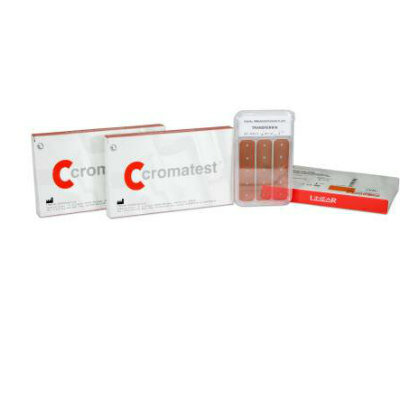Bacteria-Based Test Strips Can Monitor Blood Glucose
By LabMedica International staff writers
Posted on 26 Jan 2012
Segments of DNA embedded in bacteria can be coded to detect changes in osmolarity resulting from the presence of glucose in a blood sample.Posted on 26 Jan 2012
Students at the Missouri University of Science and Technology (MST, Rolla, USA) used a nonvirulent strain of E.coli with designed genes integrated in the bacteria’s DNA, enabling them to sense the presence of glucose in correlation to changes in osmolarity. When glucose is detected, the bacteria emit a yellow glow, and as its concentration rises, so does the light emitted glow brighter. The system might also eventually serve as the basis for a new method to monitor blood glucose levels by replacing the fluorescent gene with one that would make the bacteria change color, based on glucose concentrations.
To make the device, the students used an intermediate biobrick with a ribosome-binding site and the reporter gene (eYFP), which was then coupled to another biobrick that had three binding sites for the transcriptional regulatory protein phosphorylated OmpR. The phosphorlyation of OmpR by EnvZ (an inner membrane protein that senses osmolarity) positively correlated with the osmolarity of the system. When one or two of the binding sites are occupied, RNA polymerase is recruited to begin downstream transcription of eYFP. However, when all three OmpR binding sites are occupied, RNA polymerase cannot bind, the reporter gene can no longer be produced, and the system is inhibited.
As osmolarity increases from very low levels, the fluorescence produced by the system increases, until it reaches a threshold osmolarity level that when crossed causes the fluorescence to decrease as a result of the ensuing inherent down-regulation of the system. The activity of the system can be quantified because the two-component regulatory system of EnvZ and OmpR controls transcription of the eYFP gene, dictating the level of fluorescence.
“All you would have to do is put the DNA inside a bacteria and you've got your test strip,” said Erica Shannon, a senior year student in biological sciences at MST. “In the future, based on further research, an insulin gene could be added to this system for use in insulin pumps, where specific glucose levels trigger insulin production.”
The project was developed the system as part of an annual competition sponsored by the International Genetically Engineered Machine Foundation (iGEM; Boston, MA, USA) held during October 2011, in Indianapolis (IN, USA); the MST iGEM chapter received a silver medal for their effort.
Related Links:
Missouri University of Science and Technology
International Genetically Engineered Machine Foundation













